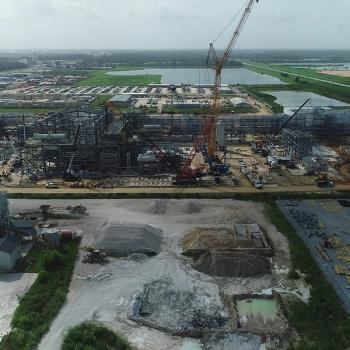
Worrying Gas Prices
Supply issues see international scramble to secure resources
Natural gas prices are spiking. Recent reports indicate a dramatic 7% increase in pricing in the US, or $9.33 per million British thermal unit (BTU) of energy. Current demand is straining diminished stock levels. While America sits securely on its current reserves, Europeans don’t have that luxury. The main fuel arteries to the EU from Russia are actively disrupted, which means Europeans are forced into paying top dollar for gas from other sources. To cope, the global energy map is being redrawn, and alternatives are being explored.
Energy companies need to find new suppliers on the global market to compensate for Russian absence. Incentives to be green are being cut back to make way for cheaper, more available fossil fuels. Germany is seeing a reversal in its tax policy, as it lowered the tax on gas from 19% to 7% until March 2024. The 12% decrease is expected to lessen the burden of growing inflation.
The United Kingdom (U.K.) is increasing its regulatory consumer energy bill limit. The country can’t afford to subsidize the cost for consumers at the current rate. Those on the Isles are going to see a dramatic increase. In October 2021, the average household paid £1,400 for its energy bill. With the new limits, the cap may be pushed as high as £5,456. This is roughly 1/5th of the median U.K. income. 31 British energy companies have been forced to close their doors since the start of 2021. With such a deficit in supply, those remaining have to take on the burden. Energy company profit margins are slim due to the price cap. This showcases the problem with intrusive regulatory standards. Even though there is unprecedented demand, the private sector in the U.K. is nearly powerless to meet it.
Shortfalls are being made up by countries like the US and Qatar. Competition for supplies is amplified by an unusually warm summer in Asia. South Korea and Japan are in a price war with Europeans. The result is an extremely advantageous position for the sellers and worry for buyers. This shows a major shift in the global energy map, with once-reliable sellers now out of the market. Moreover, securing ways to increase capacity on fewer routes brings further contention.
Supply lines are seeing a major shift. Liquified natural gas (LNG) tankers are in high demand. This is part of the reconsolidation of global supply routes. LNG tankers help secure trade between suppliers and buyers. There is nothing short of an absolute scramble for nations to obtain as many of these vessels as possible. European powers are facing the possibility of supply chain collapse pending the outcome of the Ukrainian conflict. Alternatives are being explored as an insurance policy for resource-strapped regions.
One choice is in hydrogen, but it’s costly and requires enormous backing to produce enough. Coal is the elephant in the room, but with the EU shying away from its use, it doesn’t seem like the savior. Until the energy map is reorganized, higher prices are unavoidable.
Newsletter
Power your knowledge with the latest in turbine technology, engineering advances, and energy solutions—subscribe to Turbomachinery International today.




